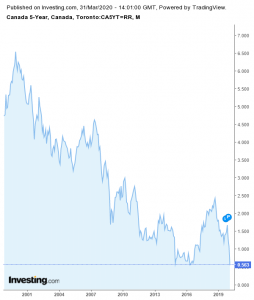The Federal Government announced on March 18, 2020 that it would provide increased flexibility to lenders to defer mortgage payments. Then the big-6 banks announced they would be allowing up to 6 months of mortgage payment deferrals to assist those impacted by COVID-19. The Monoline lenders followed suit. Since then they have all been doing as best they can to accommodate the massive volume of calls and emails, while implementing new processes and procedures almost daily to help handle these inquiries. Lenders are updating us daily/hourly as to what the best course of actions is, and I encourage you to contact your Mortgage Advisor for current advice.
Essential Services –Bankers, Mortgage Brokerages, Realtors and other Financial service providers have been declared essential services in Alberta. So we’re not going anywhere and will continue to be there to help you through this.
Banks are offering COVID-19 Relief on Auto & Personal Loans, Credit Cards, Credit Lines
Student Loans can be also be deferred. They are either Federal or Provincial, so check those programs.
Important note – a payment deferral is not a forgiveness of the amount owed. It means the payments are deferred to a later time, when we will have to pay them back, with a cost of interest charges on the interest deferred (aka interest on interest).
Credit Union customers – access to a variety of programs and solutions designed to ease difficulties with loan payments and short-term cash flow. Check with your Credit Union.
Here is what we have learned so far:
- Banks are prioritizing clients based on need and next mortgage payment date.
- Regardless of how urgent your situation is, it is going to take time to get a response. It can be frustrating to wait on hold, or wait for an email response, but please contact them before you miss a payment, as to not damage your credit.
- NEVER EVER be late for or miss a mortgage payment. Do whatever you have to do. Pay with your credit card. Borrow from family. Anything.
- Effectively the deferred interest is capitalized (added) into the mortgage balance owing.
- I have heard from clients who have received 6 months of deferred payments with no questions asked. In fact I am one of those lucky borrowers.
- Understand this is not always the case. You may be asked about your employment status and other reasons you have for requesting deferral. Some lenders will ask about your net worth status and liquid assets available. (If you do your regular banking with the same lender that holds your mortgage, they can likely assess this internally).
- Things like whether or not your mortgage is default insured aka (CMHC), collaterally charged (has a HELOC on it), the loan-to-value ratio, and if you have been set up on accelerated payments or applied any lump sum payments in the past will be considered.
- Each lender has their own criteria for deciding what criteria they will use in making mortgage deferral decisions. In my own experience with three lenders so far, and based on many of my clients experiences, the consensus so far seems to be that often the best results are received when speaking directly with a bank representative. Not always, but most often. So in my opinion it is best to be willing to be on hold for an hour and maybe more, to achieve your desired outcome.
- Note- if you are a denied a deferral, try again via the same method or the other methods your lender offers (phone, website application or email). There is still not full consistency within each lender on what is granted and what is denied from day to day and person to person.
- Some clients are offered a 1-month or a 3-month deferral only and encouraged to re-apply with new status going forward. * PS to Alberta residents * We have had clients in the oil and gas industry report they were asked by the lenders if their layoff was directly due to COVID-19, or other factors. GREAT QUESTION. I believe the answer may be related to the apparent other challenges within the O&G industry and some lenders being sensitive to this as an area of risk to address.
- Mortgage distress, like any kind of distress, is relative. For some people, mortgage distress is due to worry about the coming disastrous economic effects of COVID-19 on their job or business. For other people, mortgage distress is being suddenly laid off with no income and unable to pay their Mortgage on Tuesday. All are valid concerns, however, some lenders are prioritizing and only dealing with those not able to pay their mortgage payment due within the next few days. If you don’t have concern about missing your next payment, consider sending an email or filling out a form for a call back later. I know waiting can be frustrating. In these times, exercising a little patience and freeing up the phone lines could help your friends and neighbours keep their home.
- If you believe you have some equity in your home, you might be able to avoid all of this by speaking to your Mortgage Broker and setting yourself up to access equity for an affordable fallback. You should do this before there are any negative changes to your income or home value. I would suggest NOW is the time. You may be able to refinance to draw out an emergency fund, set up a home equity credit line, a reverse mortgage, or even private financing to bridge the gap at this time.
- Self employed and commissioned workers: Some lenders will require “proof” that you’ve been laid off or your income has been impacted by COVID-19 in order to defer payments. For many of you, that is something that you won’t be able to document for months. I encourage you to speak with your Mortgage Broker NOW to explore your financing options outside of or in addition to deferred mortgage payments.
- Questions to ask your bank when you speak with them about a deferral:
- Ask your bank about the details of what their bank is offering.
- Does the deferred pay-down get added into the payments to keep the amortization the same, or is the amortization lengthened to fit?
- Some banks cap the deferred interest within the remaining term, some within the amortization. If within term then the lower the term the higher the new payment will be after the 6 months is up will be. If within the Amortization then generally the impact is less as the timeline is longer.
See the CMHC webpage on mortgage deferrals here
COVID-19: Understanding Mortgage Payment Deferral
What are the costs to you of a 6-month Mortgage Payment Deferral?
Read my Blog Post on that here
Why You Should Monitor Your Credit Report and Score Once You are on a Mortgage or any other Debt Payment Deferral Program
Read my Blog Post on that here
Here is an article by Money Coaches Canada
Should I Defer my Mortgage Payments?
I hope this information helps you in your decision-making and actions on your mortgage(s). Do not hesitate to call or email me for further advice.
** And my sincere thanks to my good friend and Jencor Mortgage Advisor Sarah Boudreau for the original idea for this post and for some of the content of this post.**


